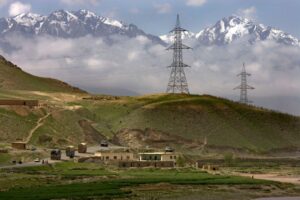In the 21st century, the collapse of physical borders, the expansion of globalization, and the increasing economic and trade interdependence have further linked the interests of nations. Countries are striving to remove obstacles to trade by forming economic and trade blocs to access global markets. The creation of trade blocs is one of the key features of the modern economy, laying the groundwork for greater economic development, stability, and security.
For developing countries that are not prepared to enter free trade in the short term, economic integration and the formation of regional trade blocs can be an effective way to open their economies and integrate them into the global economy. This research aims to examine the possibility of creating a trade bloc among regional countries, with Afghanistan as the central focus, while discussing the benefits and challenges of such a trade and economic bloc.
What is Economic Integration?
Establishing economic integration among countries with weaker economies can help them test their economic strength, trade capacity, and competitive advantage on a larger scale. This can lead to increased investment within the economic region, resulting in greater economic welfare and creating the groundwork for economic growth and development. Economic integration, by eliminating customs barriers within the region, facilitates companies’ access to larger markets and removes obstacles to the transfer of capital and technology within the region. By abolishing trade restrictions and establishing a coordinated customs tariff system, it creates a favorable environment for large-scale production, sales within the regional market, and regional economic growth. Furthermore, tariffs and transportation play a significant role in the competitiveness of goods and services in various markets. In regional trade agreements, these two determining costs are minimized due to the proximity of member countries (neighboring each other), giving producers greater competitive power.
Afghanistan as a Hub of Regional Integration
Economic integration could be one of the serious approaches to increasing Afghanistan’s trade exchanges. Afghanistan is located between three major Asian regions: Central Asia, South Asia, and the Middle East. As efforts to expand economic cooperation between Central and South Asia intensify, Afghanistan’s role as the shortest and most cost-effective route connecting these regions has become more prominent. From Afghanistan’s perspective, focusing on its traditional role as a bridge between these three Asian regions can be one of the key factors in expanding regional economic integration.
Afghanistan in the heart of Asia
Notable regional organizations include the Economic Cooperation Organization (ECO) and the Shanghai Cooperation Organization in Central Asia, the South Asian Association for Regional Cooperation (SAARC) in South Asia, and the Gulf Cooperation Council (GCC) in the Middle East, which were established for economic, political, and social cooperation. However, these organizations have not been fully effective and face internal challenges. Moreover, these organizations are limited to certain countries and do not even cover all countries in their regions. Thus, there is no organization dedicated to cooperation between these three important Asian regions, which together have a population exceeding two billion people.
Afghanistan’s Geostrategic Position in the Region
Afghanistan, situated at the intersection of these three Asian regions, can act as a key connecting point and transit route for these countries. It serves as a bridge linking Central Asian countries (Kazakhstan, Kyrgyzstan, Turkmenistan, Uzbekistan, and Tajikistan) to the open seas and India, playing a crucial role in the connection between these countries, Central Asia, and South Asia. Additionally, due to being the closest land route between Central Asian countries and Arab nations, Afghanistan can attract attention from both Central Asia and the Middle East.
India, one of Asia’s emerging and powerful economies, has experienced high economic growth in recent years and has a large population, making it in need of energy resources to fuel its development. On the other hand, the Middle East and Central Asian countries, with their vast oil and gas reserves, can act as suppliers of these resources. Furthermore, powerful economic and manufacturing nations in the region, such as India and Pakistan in South Asia, Iran, Turkey, and Gulf nations in the Middle East, and Kazakhstan in Central Asia, possess significant potential for economic and trade complementarity with one another.
One of the critical factors in fostering economic integration is the proximity of countries and transportation routes between them. Historically, these regions have engaged in trade and commerce, with the ancient Silk Road being one of the most important routes crossing many countries in this area. Additionally, the Lapis Lazuli Corridor connects Afghanistan to European countries via Central Asia, which can also play a role in fostering integration among these nations.
https://en.unesco.org/silkroad/about-silk-roads
Expanding economic cooperation between Central Asia and South Asia relies heavily on land connections between these regions. Afghanistan, as the connecting bridge, offers the shortest route between them and can play a crucial role in shaping regional integration. Major economic projects, such as the gas pipeline that transfers Turkmenistan’s gas to Pakistan and India (TAPI), or the electricity transmission projects from Central Asia to Pakistan (CASA), are examples of initiatives that can contribute significantly to economic integration.
Both Afghanistan and Central Asian countries, being landlocked, need access to open seas. In this context, collaboration with Pakistan and Iran and their inclusion in regional integration efforts could prove fruitful, enabling these nations to connect to the open seas. Chabahar Port, a free trade zone in Iran, could facilitate the connection between Central Asia and South Asia. Due to the ongoing tensions and lack of amicable relations between India and Pakistan, Chabahar Port may play a crucial role in trade between Central Asia, Afghanistan, and India. However, the competition between Iran and Pakistan over providing a transit route for Central Asia and Afghanistan to the open seas should not be overlooked.
Obstacles to Regional Economic Integration
Despite numerous efforts to bring these countries together and establish regional organizations, Central and South Asia have some of the lowest levels of intra-regional integration. One of the main reasons for this is the lack of trust among neighboring countries toward Afghanistan as a key player in regional programs. The lack of a legitimate government in Afghanistan remains a significant issue. Furthermore, Afghanistan’s poor infrastructure, the absence of railways, political instability, heavy reliance on foreign aid, widespread corruption, and the presence of terrorist groups have weakened its economy, distracting attention from these matters.
Border tensions between India and Pakistan, Iran’s disputes with Arab countries, and the competition between India and China as major regional economies are additional challenges to forming such a trade bloc.
Conclusion
Considering Afghanistan’s status as a consumer nation with a significant trade deficit, economic integration and the formation of a trade bloc could greatly aid in the country’s economic and trade progress, reducing its dependency on neighboring countries, especially Pakistan and Iran. Therefore, Afghanistan must reevaluate its relations with the world and regional countries to make the most of these opportunities. In addition to planning for infrastructure and transportation development, the country needs to design strategies that align with the needs of regional countries and Afghanistan’s capabilities to benefit maximally from regional opportunities and cooperation.


